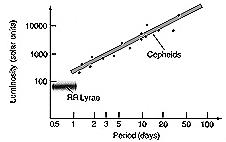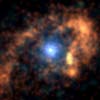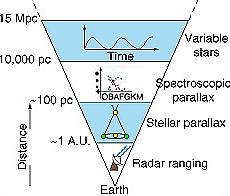 Don't
all stars change over time?
Over millions of years yes, but some vary over periods of months,
days, ..., sometimes even hours! Don't
all stars change over time?
Over millions of years yes, but some vary over periods of months,
days, ..., sometimes even hours!
 Why would stars vary? Some are going
through an unstable period in their lives (more than just the
usual astroseismology oscillations, or "starquakes"),
others just look like they vary, but what we're seeing is something
different. For example, the first "variable star" ever
discovered was Algol, which in reality is a (strange) eclipsing
binary star. Why would stars vary? Some are going
through an unstable period in their lives (more than just the
usual astroseismology oscillations, or "starquakes"),
others just look like they vary, but what we're seeing is something
different. For example, the first "variable star" ever
discovered was Algol, which in reality is a (strange) eclipsing
binary star. |




![]()